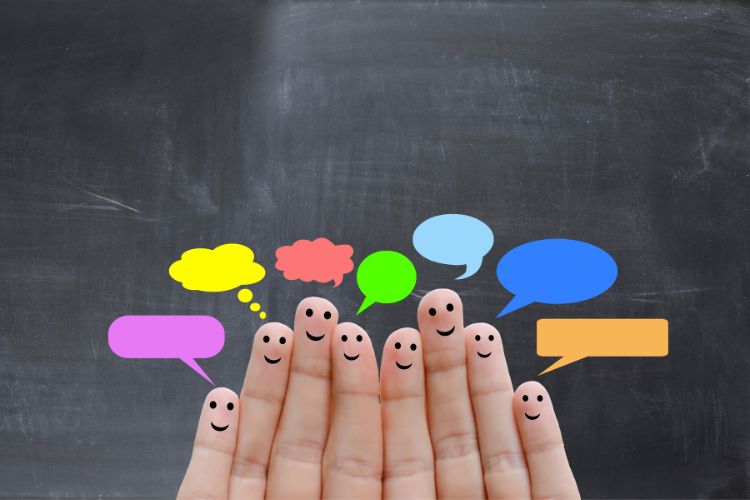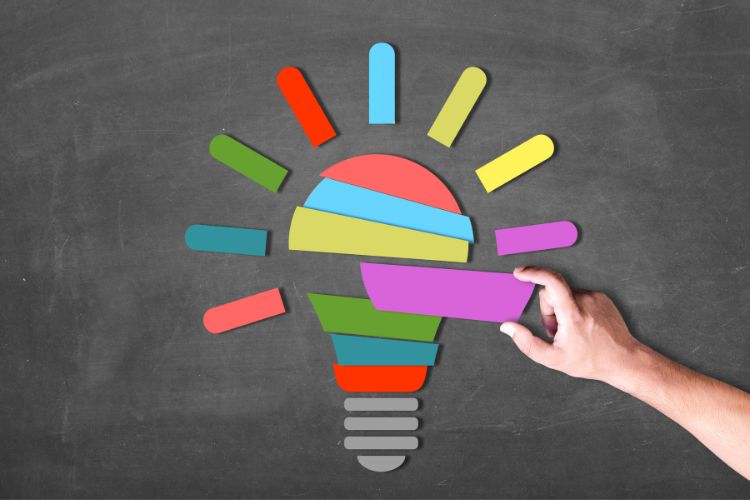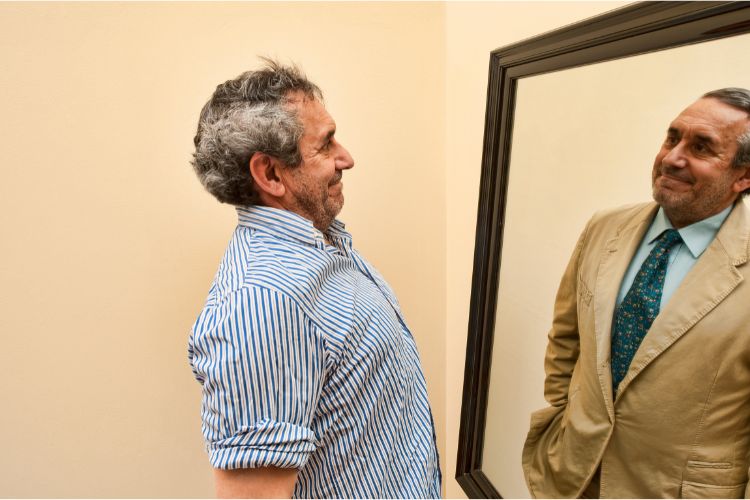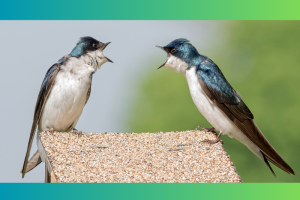The act of retrieval binds an idea into long-term memory, allowing you to set it into practice. Here are 13 game-changing language learning approaches for students and teachers. Use these methods to practice your language learning retrieval.
7 Language Learning Approaches for Learners

Think of your intelligence as a work in progress, and remember that you’re constantly learning and improving your language fluency.
Take an active approach to your learning. Reading the summary is a good first step.
Follow up with these strategies:
- Pause regularly to ask yourself questions about the material you’re learning.
These questions may include the following:
- What are the main concepts?
- How would I explain these to someone else?
- What concepts and information am I encountering for the first time?
- What connections can I make with my existing knowledge?
Think of a metaphor or image that demonstrates the principle you’re learning.
For example, you might make up a story about a girl (tyttö) picking a berry (marja) and mushroom (sieni) from the forest (metsä) to remember the relevant words in Finnish.
The more times you tell yourself the story, the easier it will become to recall those words.

To get the most out of your language study sessions, consider these strategies:
- Anticipate main concepts in your reading material: Engage with your reading by anticipating the main concepts and trying to define them before you find the definition in the text. As you read, see if you were right.
- Solve problems before you know how: Try to solve problems before you learn the formula. Once you learn the formula, go back and see how close you were.
- Create questions for future Quizzes: As you study, create questions to quiz yourself later.
- Regularly test yourself on your material: Schedule time to regularly quiz yourself on new and past material, interleaving multiple subjects. Check your answers and review the topics of the questions you get wrong.
To get the most out of your language classes, use these strategies:
- Test yourself on the main concepts using a copy of the lesson or presentation materials.
- Schedule monthly emails to yourself with questions about the material to continue regular self-testing.
Additionally, there are a few tips based on Huberman’s observations about neuroplasticity and how it relates to language learning in adults.
Determine Your State of Automatic Arousal
Huberman coined the term “limbic friction” to “attempt to give a name to something that’s more nuanced and mechanistic than stress.”
Limbic friction communicates that the nervous system isn’t at the optimal level for an objective (in this case, language learning). This might mean that one is overly alert or overly tired and unfocused.

For the former, he recommends calming the nervous system via a “physiological sigh,” keeping the environment quiet, and consuming foods with tryptophan.
For the latter, he recommends super oxygenated breathing, putting on music or other background noise, and getting plenty of rest at night.
Engage Your Vestibular System
Our ears have things called semicircular canals, within which are little stones (bits of calcium) that roll back and forth like marbles. This movement tells our brain and body information about our position and how to compensate for gravity shifts.

According to Huberman, “The more novel that a behavior is in terms of your relationship to gravity, the more it will open up the opportunity for plasticity. It’s all about your orientation relative to gravity.”
He recommends engaging in activities that encourage “novel movement,” such as handstands or yoga, as they can help optimize your brain’s plasticity for learning.
Create a Sense of Urgency
According to Huberman, “There’s a neurochemical signature of urgency. That urgency signal converges with the focus signal and reopens plasticity for [the task one is undertaking].”
The importance of a task, such as language learning, determines the rate and magnitude of one’s neuroplasticity while undertaking the task.
If learning a language is necessary and urgent—be it for a job, a relationship, a trip, or an impending deadline—the brain’s capacity to learn that language increases dramatically.
Cue Mental Focus by Sharpening Visual Focus

Huberman explains that our eyes’ primary job is to inform us how light or dark it is outside. When we get sleepy, our eyes get harder and harder to keep open; this is because open eyes indicate alertness.
To take advantage of this, he suggests that language learners try studying by limiting their visual field to the materials necessary for study. This will limit distractions and help your brain (through your eyes) focus on what’s most important.
Engage in Short Incremental Learning Bouts within an Ultradian Rhythm

Huberman suggests pursuing duration, path, and outcome events within an ultradian rhythm, or a 90-minute cycle that breaks up the 24-hour day. This taps into the body’s natural rhythms of productivity and focus.
These cycles should be scheduled at the time of day one is most alert. During these 90-minute sessions, students should spend only seven to 30 minutes per topic.
For example, you might spend one chunk of the 90 minutes studying conjugations, another chunk on vocabulary, and yet another on listening comprehension. After your session, take a break to allow your brain to consolidate the information you reviewed.
Make—and Keep Making—Errors
When learning a language, one must leverage the frustration during learning bouts to drill deeper into the endeavor rather than walk away. Pushing through the discomfort engages plasticity and rewires the brain to seek further challenges that increase learning.
Create Internal Rewards

While making errors during a learning bout, it’s paramount to deliberately acknowledge that the errors are desirable and necessary to achieving one’s overall learning goals.
Essentially, one must internally reward oneself for efforts to improve language learning, even though progress may not yet be evident.
According to Huberman, this internal reward “creates an outsized effect on the rate of plasticity,” ultimately accelerating it through the release of dopamine, the “pleasure molecule.”
6 Language Learning Activities for Instructors
Language teachers play an important role in teaching students how to learn a language effectively and designing instruction that incorporates effective learning and studying strategies.

First, help your students understand the principles of effective language learning:
- Desirable difficulties are important for deep understanding and long-term retention.
- The only way to mastery is to consistently surpass your current ability level.
- Failures are inevitable, but they provide invaluable learning opportunities.
Second, incorporate desirable difficulties in your teaching by:
- Using the principles of spacing, interleaving, and variation in the way you present information
- Giving frequent, low-stakes quizzes and being transparent about the quiz schedule
Students generally react and perform better when they know when to expect quizzes. However, the anticipation doesn’t reduce the quizzes’ effectiveness.
Finally, integrate these strategies into your lessons:
- Blend past lessons and material into quizzes and exercises
- Provide study aids that use retrieval practice, elaboration, and generation—such as practice tests, reflection-writing exercises, short-answer retrieval exercises, and problems assigned before a lesson is reviewed in class
- Explain the methods to students and acknowledging the initial frustrations that these can cause prevent students from getting discouraged and distrusting the strategies
Additionally, consider using some of the below strategies to integrate the principles of effective learning.
Use Free Recall
At the end of the class, students spend 10 minutes writing everything they remember from the day’s lessons. Even if they feel stuck after just a few minutes, they must spend 10 minutes trying to recall anything they can.

Then, after 10 minutes, they revisit their notes from the day, check that what they’ve recalled is correct, and—most importantly—see what they’ve forgotten. Then they know they must study the information they forgot.
Create High-Structure Class Design
Create a high-structure class with low-stakes daily and weekly retrieval exercises that still count toward students’ grades.
Learning Paragraphs
At the end of the week, students write a paragraph answering a question that reflects on something from that week—it may be about a main concept from the material or how the student would improve her performance on the next test.
Role-Playing
For practice skills, have students role-play, which allows them to use generative learning, get feedback, and reflect on how they could improve their approach.
Small Groups

Students work in small groups during class to answer a high-level conceptual question the teacher poses. After a while, one student from each group explains her group’s answer to the rest of the class, and the class critiques the group’s conclusions.
Summary Sheets
At the start of each week, students turn in a summary sheet of the previous week’s lessons, preferably through illustrations (if the subject allows) with notations pointing out key concepts.
Testing Groups
Replace study groups with testing groups. Without referring to their textbooks, students gather in groups to discuss questions they’re struggling with and collaborate to find the answers. Each student typically knows different aspects of the answer, and they can piece together the entire concept.







